Camp Kettle
Formerly known as the Cauldron
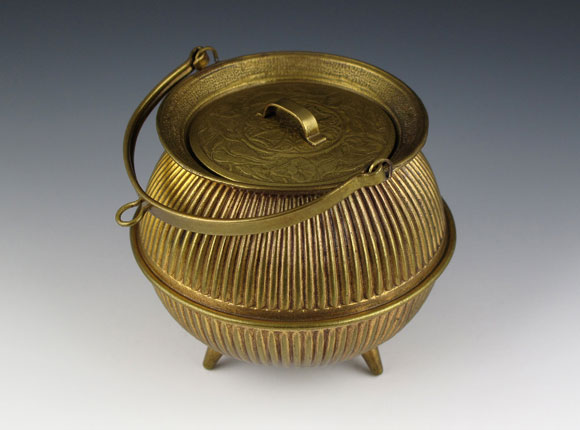
Needle Case
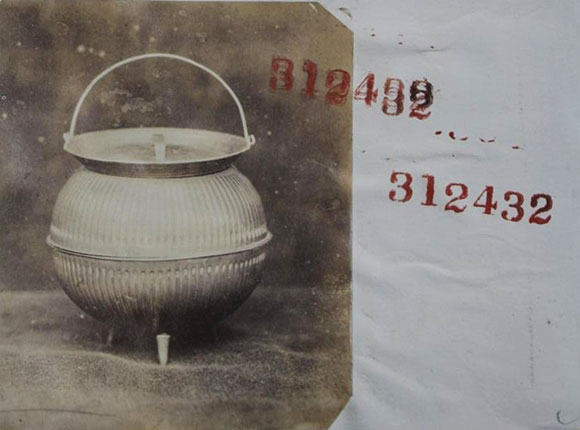
Design Representation
Design Details
Needle Case Type: |
Figural (not listed on design registration as a needle case, however is referenced as a needle case in an 1879 article)
|
Patent/Registered to: |
W. Avery & Son - Redditch |
Patent/Design Representation #: |
Ornamental Class1: Metal: #312432 |
Patent/Design Registration Date: |
August 1, 1877 |
Location of Patent/Design Registration: |
The National Archives (TNA) - Kew, UK |
Reference #: |
TNA Representation - BT 43/42/312432
TNA Register - BT 44/4/312432 |
Dimensions: |
5.2 diameter x 5.5 |
Material: |
Brass |
Name Variations: |
a) W. Avery & Son - Redditch
b) C. G. Wacker & Co - Redditch |
Other Variations: |
None |
Additional Photographs
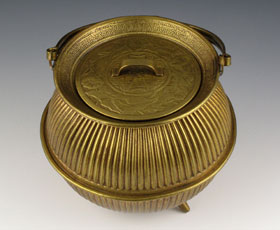
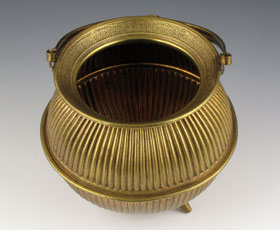
Top closed and open
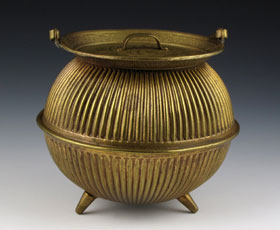
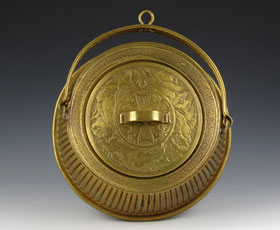
Side and tops views
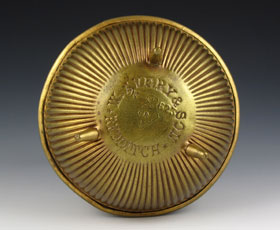
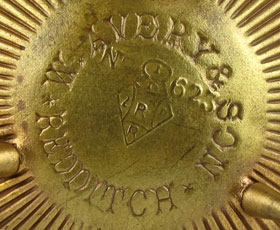
Bottom and Avery signature detail
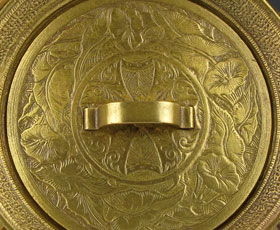
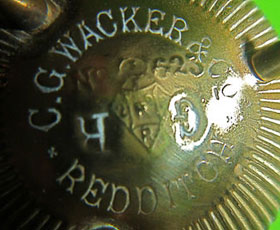
Lid detail and Wacker signature detail (photo from eBay)
Facts
A kettle is a metal cooking pot with a wide mouth used to heat water or cook food by stewing or boiling over an open fire. The camp kettle
was the main item of cooking equipment issued to feed soldiers during the 18th and 19th centuries. Another name for a cooking kettle is a
cauldron.
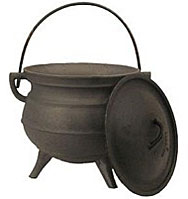
History
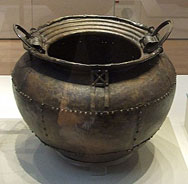
Kettles have been found dating to prehistoric times. Bronze Age cauldrons held by the British Museum and the National Museum of Ireland are
made from sheet bronze joined with rivets. It is thought that these were not used for everyday purposes but for feasting. Later kettles
were made from iron, copper and tin. During the 18th century, British soldiers were issued tin camp kettles, one per tent which accommodated
five soldiers. Tin was the metal of choice for the British because of its relative lightness, as the kettles had to be carried by soldiers
along with their usual kit, ammunition and rations weighing in all between 22.5kg (50lb) and 36.5kg (80lb). Kettle bags were also issued which
made it possible for them to be carried slung over the shoulder. The term camp kettle today refers to pots intended for open fire cooking when
camping.
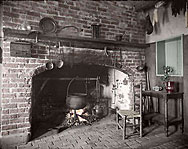
Miscellaneous
Kettle pots were used in domestic kitchens until cooking ranges began replacing open fire cooking which occurred around 1840. Now, these
pots more commonly known as cauldrons have become associated with witches in Western culture, largely due to the Shakespearean play Macbeth.
The painting below entitled "The Three Witches from Shakespeares Macbeth" was painted by Daniel Gardner in 1775. Click on the picture below
to see a larger verison of it.
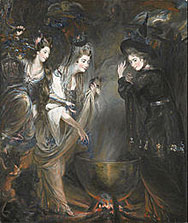
Note: Right side panel text and photos provided by Lynda Herrod.


















